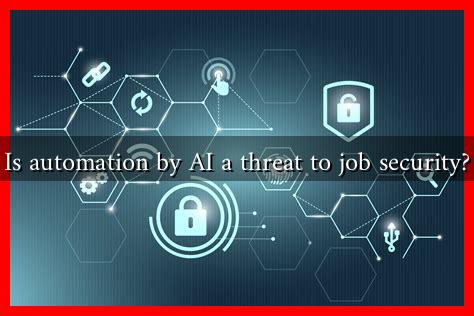-
Table of Contents
Is Automation by AI a Threat to Job Security?
As artificial intelligence (AI) continues to evolve, its integration into various industries raises a pressing question: Is automation by AI a threat to job security? The rapid advancement of technology has led to significant changes in the workforce, prompting both optimism and concern. This article explores the implications of AI automation on job security, examining the potential risks and benefits while providing insights into how workers and businesses can adapt.
The Rise of AI Automation
AI automation refers to the use of artificial intelligence technologies to perform tasks that traditionally required human intervention. From manufacturing to customer service, AI is increasingly capable of executing complex processes with speed and efficiency. According to a report by McKinsey, up to 800 million global workers could be displaced by automation by 2030, highlighting the urgency of addressing this issue.
Jobs at Risk: Which Sectors Are Most Affected?
While AI has the potential to enhance productivity, certain sectors are more vulnerable to job displacement. The following industries are particularly at risk:
- Manufacturing: Automation has already transformed manufacturing processes, with robots performing tasks such as assembly and quality control.
- Retail: Self-checkout systems and AI-driven inventory management are reducing the need for cashiers and stock clerks.
- Transportation: The rise of autonomous vehicles threatens jobs in trucking and delivery services.
- Customer Service: AI chatbots and virtual assistants are increasingly handling customer inquiries, reducing the demand for human agents.
The Positive Side: New Opportunities Created by AI
Despite the potential for job loss, AI automation also presents opportunities for job creation and transformation. Here are some ways AI can lead to new employment prospects:
- New Job Categories: As AI takes over routine tasks, new roles in AI management, data analysis, and cybersecurity are emerging.
- Increased Productivity: Automation can enhance productivity, allowing businesses to grow and potentially create more jobs in the long run.
- Upskilling and Reskilling: Workers can transition into new roles by acquiring skills relevant to the evolving job market, such as programming and data science.
Case Studies: Real-World Examples
Several companies have successfully integrated AI while maintaining or even increasing their workforce. For instance:
- Amazon: While the company employs robots in its warehouses, it has also created hundreds of thousands of jobs in logistics, technology, and customer service.
- Siemens: The manufacturing giant has embraced AI to optimize production processes, resulting in increased efficiency and the creation of new engineering roles.
Strategies for Workers and Businesses
To navigate the challenges posed by AI automation, both workers and businesses must adopt proactive strategies:
- Continuous Learning: Workers should engage in lifelong learning to stay relevant in a rapidly changing job market.
- Collaboration with AI: Businesses should focus on how AI can augment human capabilities rather than replace them, fostering a collaborative work environment.
- Policy Advocacy: Governments and organizations should advocate for policies that support workforce transition, such as retraining programs and social safety nets.
Conclusion: A Balanced Perspective
In conclusion, while automation by AI poses a significant threat to job security in certain sectors, it also offers opportunities for growth and innovation. The key lies in adapting to the changing landscape through continuous learning and collaboration. By embracing AI as a tool for enhancement rather than a replacement, workers and businesses can navigate the future of work more effectively. As we move forward, it is crucial to foster a balanced perspective that recognizes both the challenges and opportunities presented by AI automation.
For further reading on the impact of AI on the workforce, you can explore resources from the World Economic Forum [here](https://www.weforum.org/agenda/2020/10/future-of-jobs-report-2020/).

